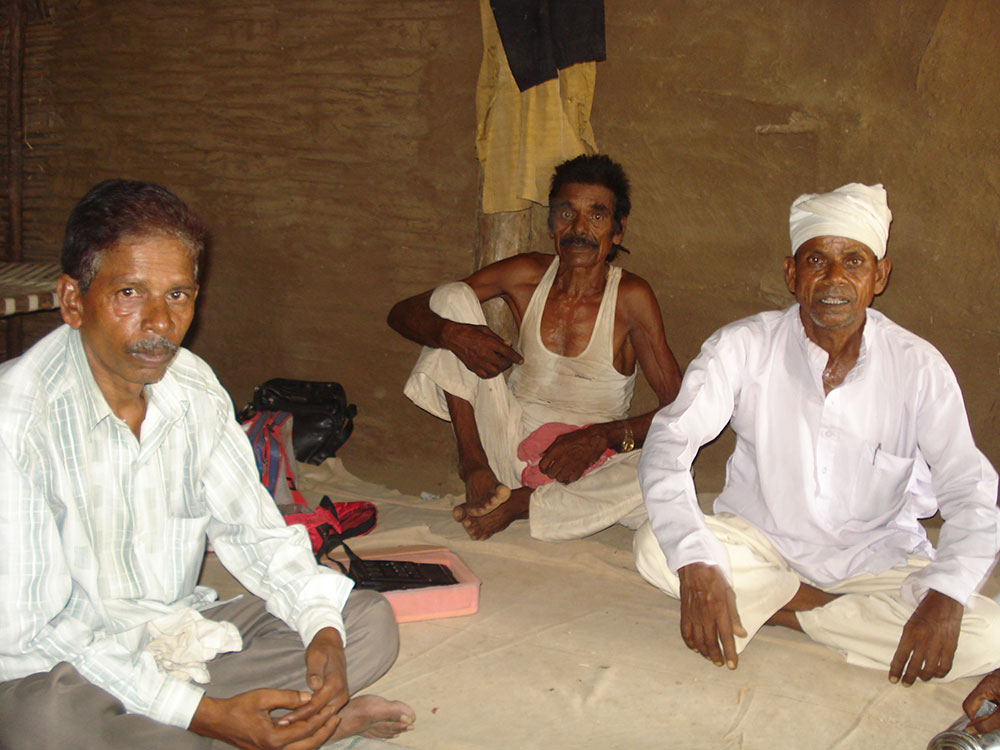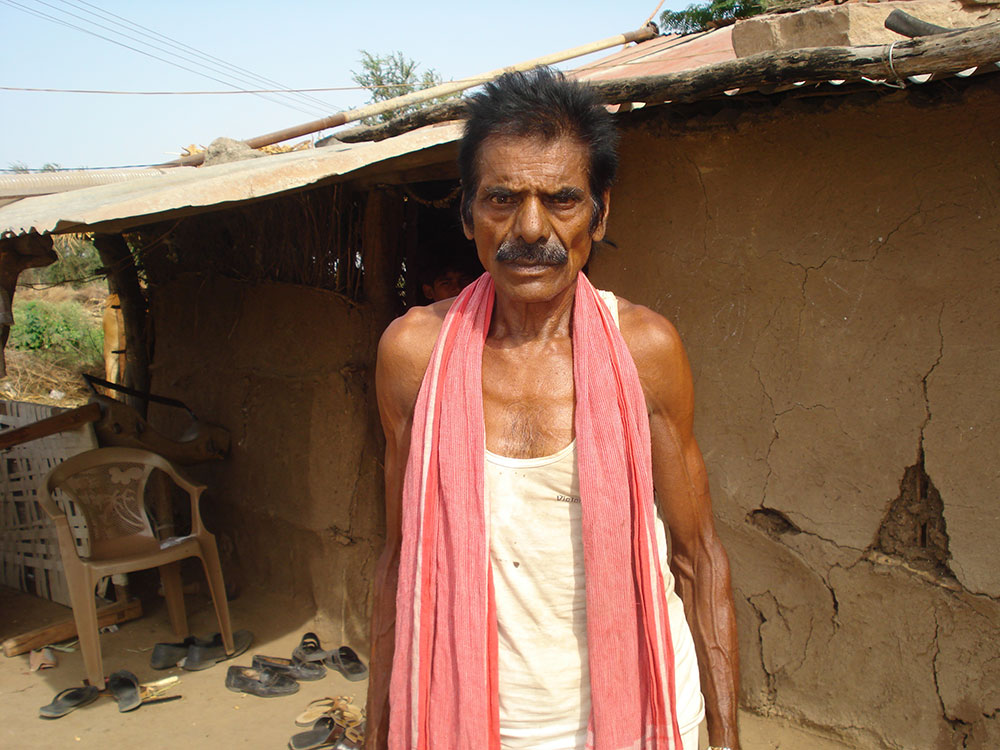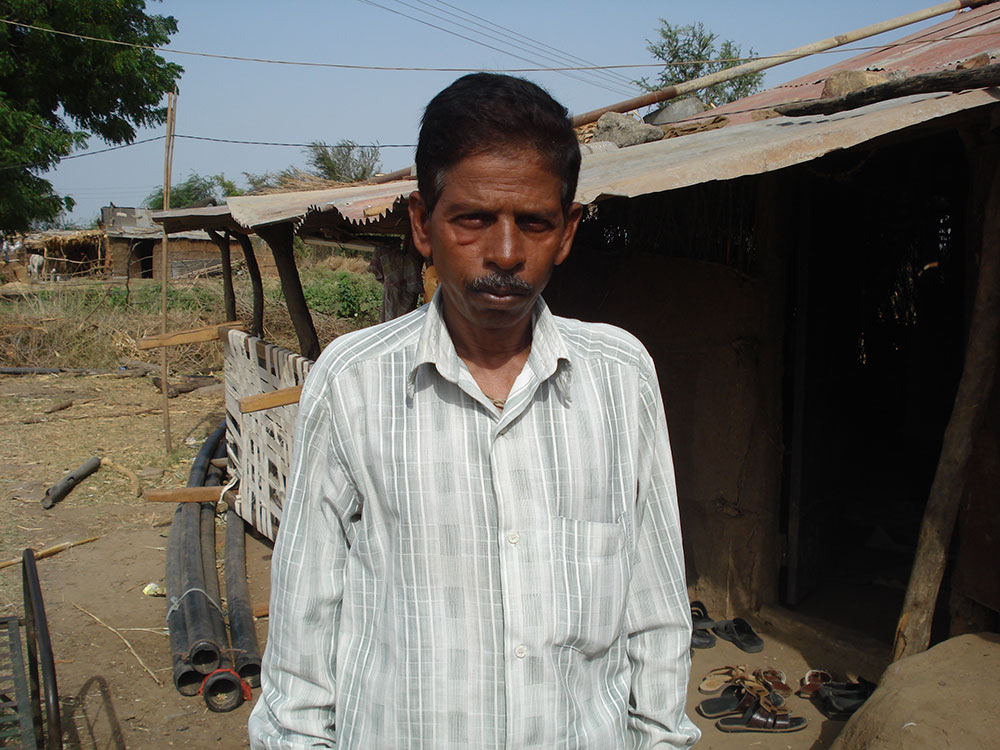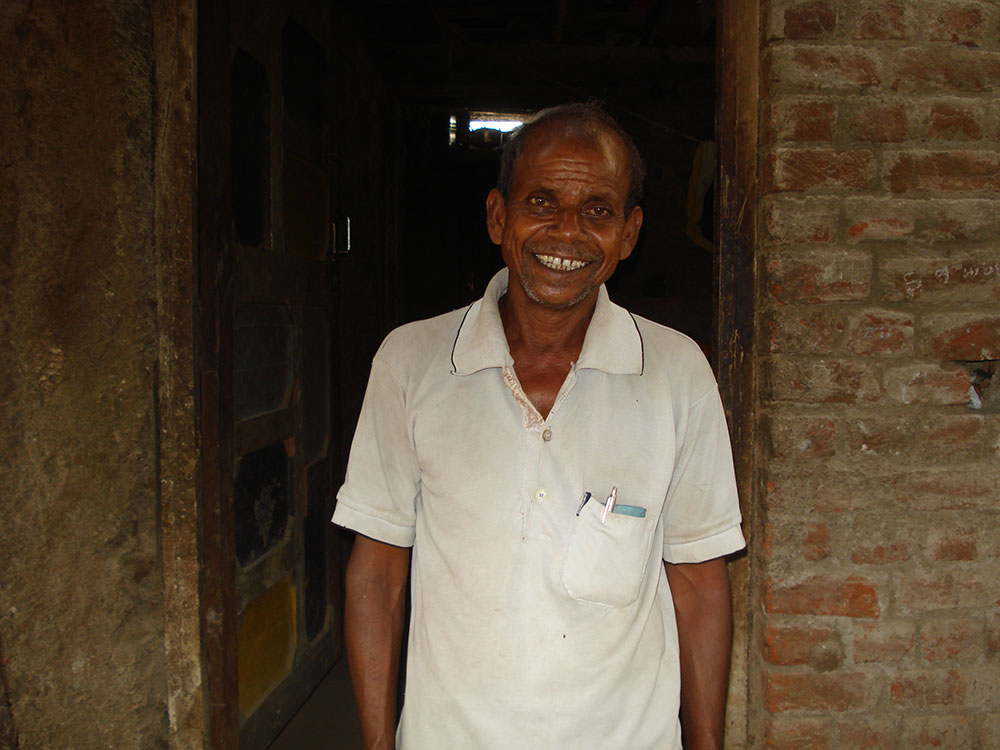Submergence Villages: Mokhadi and Vadgam in Gujarat Resettlement Sites: Savli and Dharampuri.
If there is one interview that I would strongly recommend should be heard to understand what a development project means to the adivasi community of India, it is this collective interview of three adivasi leaders of Gujarat displaced by the Sardar Sarovar Project. One of the three interviewees here, Kanitbhai Rumal expresses the agony and injustice of displacement like no other. Belonging to the fist village where the foundation of the dam was dug and which bore the brunt of blasting for the same, Kantibhai saw it all. He was present from the time the first Prime Minister of India; Jawaharlal Nehru came to lay the foundation of the dam in 1961. While the Sardar Sarovar Project (SSP) eventually came to be called the life line of Gujarat, the adivasi people of his village Mokhdi had to run hither and thither, jump into the ravines and climb the hills as the siren of the blasting went off, to avoid as Kantibhai says, “rain in the form of stones on our houses when the blasting took place…”.
“If any person knows the real story of the dam, I can answer about how the dam was constructed and what happened. The way in which the project affected people were given a bogus deal, similarly the dam is also constructed in a bogus manner”, Kanti Rumal, who was displaced in 1980, was also one among the first batches of adivasis to be shifted out of their ancestral lands and forests for the Sardar Sarovar Dam.
Kantibhai in his interview is clear that they just did not lose their lands and homes in the submergence of the Dam but they have lost their property. Property includes their lands, forests and river also. He says, “we cannot survive without a forest.” But they were never compensated for their property by the government as they were forced to evict their village Mokhdi, when the blasting for the foundation of the dam began and rain of stones fell on their village, close to the dam site.
Adivasis hardly had any land titles for the lands they were tilling in these remote areas where there were no roads nor electricity. If there would be any land title, it would be in one person’s name while several family members tilled the land. Or the adivasis were involved in shift cultivation in the forests. Besides agriculture, the adivasi community lived on the minor forest produce, fishing and cattle economy that included goats. They were never compensated for all the natural resources they lost in the submergence by the dam, explains Kantibhai.
Anyone who believes that the SSP project brought prosperity to Gujarat must listen to Kantibhai to understand what tragedy it brought about upon the thousands of adivasis of the state affected by the dam. Kantibhai’s struggle began while he was a young man and displaced in the early 1980s from his ancestral village Mokhdi even when there was no proper rehabilitation policy in place. And he was still fighting when he breathed his last in a tragic accident in November 23. Kantibhai was the leader of Gujarat Visthapit Sangharsh Samiti and the Narmada Bachao Andolan but before that, he worked with the well-known NGOs of Gujarat like Arch Vahini and Anand Niketan Ashram for proper rehabilitation.
Late Jiku Jesang, also an adivasi leader from the same village as Kantibhai, corroborates the dispossession of the adivasis and the struggle they waged for survival once displaced by Gujarat’s supposed life line, the Sardar Sarovar Project.
And finally, Shanker Kagda also lends his voice to this collective interview of the three adivasi leaders of Gujarat who have fought hardest against displacement by the SSP and for the longest time. Shankarbhai is also one of the senior most adivasi leaders of Narmada Bachao Andolan in Gujarat, and was himself displaced by the SSP. He continues to fight even today since his village Vadgam, the very first opposite Mokhdi, was displaced by the dam. He lives in his resettlement site Dharampuri after Vadgam, his ancestral village submerged in the early 1990s and they were forcefully shifted with deployment of police to Dharampuri rehabilitation site. Shankarbhai continues to fight for those displaced by SSP and lends his support to those adivasis who continue to lose their lands to the Statue of Unity, the world’s tallest statue, built facing the dam on Adivasi lands, to encourage five-star tourism.




Duration:
01:54:30
Language:
Gujarati, Subtitles in English
Subtitles can be switched on and off by clicking ‘CC’ button at the bottom right of the video
This collective interview of senior most adivasi leaders of Gujarat from the villages displaced by the Sardar Sarovar Project (SSP), is a very heartrending interview on one hand and a very spirited one on the other. In this interview, the Late Kanti Rumal, the Late Jiku Jesang and Shanker Kagda expose the claim of Gujarat Government that the oustees displaced by the SSP have been properly rehabilitated. They agonise over the many losses they have suffered for having been forced to leave their ancestral lands, forests and homes to make way for what is claimed to be the life line of Gujarat- the SSP. While this interview can leave one deeply shaken, it is also a story of the spirited struggle of the adivasis of Gujarat to actualize their rights on their forcible displacement for what is claimed to be in interest of development. The three adivasi leaders here question whose development these kinds of mega dam-based projects lead to and who suffers the losses. This is a must listen interview from among the many here.